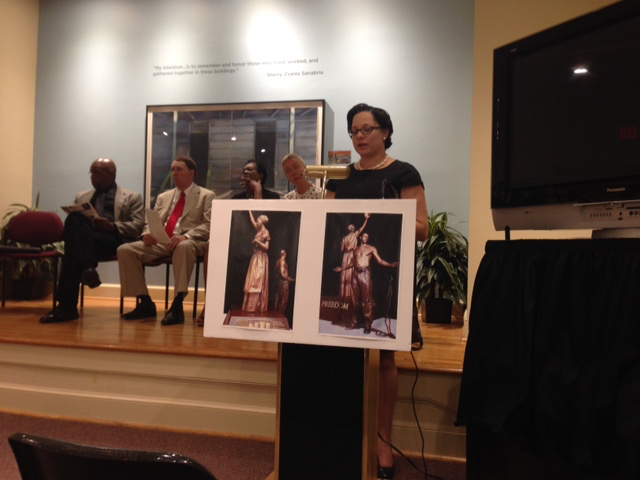Tough Choices for a New Monument
/Sen. Jennifer McClellan opens the Public Hearing at the Alexandria Black History Museum on July 31.
If you could only choose 8 African American Virginians to be recognized on a new monument, how would you do it? You might decide to select 4 people from the pre-emancipation period, pre-emancipation (1619-1865) and 4 from 1866 onward. You might decide you need a range based on region of Virginia, what they did, both sexes, and other criteria. No matter, you would know that you have many more possibilities than space on the monument.
That's the decision facing the commonwealth's Martin Luther King, Jr., Memorial Commission. The commission is responsible for constructing a new monument, called the Emancipation Proclamation & Freedom Monument, in Richmond.
On Monday night, members of a commission working group held the second of 5 public hearings state-wide, this one at the Alexandria Black History Museum. The working group already narrowed down an initial list of 95 people to 30 finalists. People could state their preferences at the hearing.
While a few people spoke in favor of one finalist or another, often based on personal knowledge of that person's impact, two overwhelming sentiments characterized the hearing:
- Support for the monument and its design, and recognition of the commission's tough choice to select only 8 people;
- Support that at least several of the 8 were involved in armed resistance against slavery and injustice, such as Nat Turner in 1831 or Gabriel in 1800. (Note: the commission has posted brief biographies of the nominees.)
The Emancipation Proclamation & Freedom Monument
According to State Senator Jennifer McClellan, chair of the commission, the monument will be built on Brown's Island in the James River, a public space accessible by a pedestrian bridge from downtown Richmond. Rev. John Jasper began preaching on this island in an abandoned Confederate stable, before moving his growing congregation into the city. Completion goal: 2019, to mark 400 years that African Americans have lived in Virginia.
Representation
An interesting discussion ensued about the monument's design by Oregon sculptor Thomas Jay Warren. Sen. McClellan said the first design competition resulted in very abstract works on the one hand or specific people on the other. This design depicts a newly freed man, woman, and child--no one specific but clearly strong, dignified individuals.
While no one had a specific count of the number of monuments and statues around the state that depict African Americans, the consensus was: not many. Thus, everyone who expressed a view at the hearing agreed about the importance to show strong, independent people, and not an abstraction to represent freedom, etc.
It's the base of the monument where the design calls for the 8 individuals. One person suggested not narrowing it down to 8 people. A few people were intrigued by his suggestion, while others said they wanted to ensure future generations see names, faces, and experiences.
After the series of hearings, the working group makes a recommendation to the full commission. No matter the 8 that make it to the base of the monument, they are looking for ways to publicize the achievements of all those nominated.


